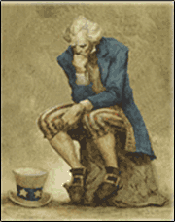
–>
June 25, 2022
Back in 1951, shortly before I was born, my father had a very challenging job. He worked at a tavern in a very rough Chicago neighborhood on East 51st Street. One very special day for me, anyway, a customer came into the tavern, ordered a drink, and paid for it with a half dollar. That half dollar coin was quite unusual. It was what coin collectors call an 1861 “Liberty Seated” half dollar. Recognizing the old age of the coin and the interesting design, my dad decided to save it. When he got home from work that day, he put it away in his dresser drawer.

‘); googletag.cmd.push(function () { googletag.display(‘div-gpt-ad-1609268089992-0’); }); }
Fast forward a decade or so and I am a boy of 10 or 11 years of age. One day my dad calls me into my parents’ bedroom, opens his dresser drawer, and shows me his saved half dollar. My boyhood imagination becomes ignited. I hold the 1861 coin in the palm of my hand and picture a Union soldier carrying it into a Civil War battle — perhaps even Gettysburg! I think about all the other hands that once touched that half dollar as it traveled through time to the then present day. That was the day I decided I was going to become a coin collector.
The study of coins has helped me better understand our American history. The study of coins has increased my love of country.
The Coinage Act of 1792 was passed by Congress and signed by George Washington in April of that year. Among other things, the Coinage Act of 1792 ordered the establishment of the first U.S. Mint (in Philadelphia) and a specific list of various coins to be struck in the near future. These coins would be made of either gold, silver, or copper. They all would have something in common. The front side (the obverse side) of every coin would have an image of Lady Liberty, the inscription “Liberty,” and the year of the minting.
‘); googletag.cmd.push(function () { googletag.display(‘div-gpt-ad-1609270365559-0’); }); }
It did not matter if Liberty was sitting, walking, or standing. It did not matter if she would have braided hair or flowing hair. And it mattered not if Miss Liberty would be depicted with a Native American war bonnet upon her head (what some erroneously call an “Indian Head” penny). What did matter was that all original U.S. coinage would be graced with Lady Liberty’s presence.
Many people are unaware that Lady Liberty had a “life” well before the Statue of Liberty gift from the French. In fact, Miss Liberty had Greco-Roman mythological origins. Liberty was the goddess of liberty and freedom, who went by the Roman name: Libertas. Of course, that is not to say our Founding Fathers were idolaters. They did not believe in Liberty the goddess, but rather they believed in liberty the concept.
It was for this “liberty for all” concept that Lady Liberty was placed upon all of our early coins. Like our new nation of the people and for the people, our coins were going to be different. Built on the concept of liberty, there would be no monarchs or dictators to be found in the nation, or on the coins!
But the freedom message on our early coins goes deeper still. A case in point is my 1861 Liberty Seated half dollar. In Liberty’s left hand is a “Liberty Pole” and atop the pole, what looks like a flag, is not a flag but a “Liberty Cap.” Similarly, in Ancient Rome, Libertas was often depicted holding a vindicta rod and pileus cap. These two objects were ceremoniously used during the emancipation of slaves. Such great symbology to be found on so many of our old coins!
Probably my favorite American coin, because of its beauty and message, is the Winged Liberty Head dime (1916-1945). Because of the winged cap that Liberty wears, this coin has erroneously been associated with the Roman god Mercury, and therefore the dime is often referred to as a “Mercury dime.” But it’s not Mercury on the coin. It’s Liberty.

So why the wings on Lady Liberty’s liberty cap? The wings symbolize liberty of thought; that we have the right and freedom to think as we wish. Imagine that. How refreshing to think we are entitled to our own opinions in today’s present climate!
‘); googletag.cmd.push(function () { googletag.display(‘div-gpt-ad-1609268078422-0’); }); } if (publir_show_ads) { document.write(“
Many subsequent coinage acts have been passed over the years and the faces of our coins have changed – and that’s not necessarily a bad thing. But one thing is for sure, and that is that the original liberty message of the Founding Fathers on our coins and in our country is becoming lost. Perhaps we need to once again put Lady Liberty front and center back on our money, and in our hearts.
<!– if(page_width_onload <= 479) { document.write("
“); googletag.cmd.push(function() { googletag.display(‘div-gpt-ad-1345489840937-4’); }); } –> If you experience technical problems, please write to [email protected]
FOLLOW US ON
<!–
–>
<!– _qoptions={ qacct:”p-9bKF-NgTuSFM6″ }; ![]() –> <!—-> <!– var addthis_share = { email_template: “new_template” } –>
–> <!—-> <!– var addthis_share = { email_template: “new_template” } –>





